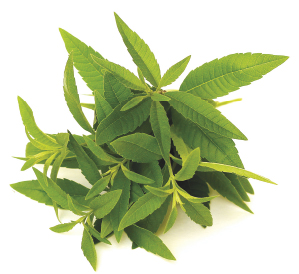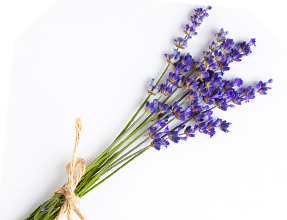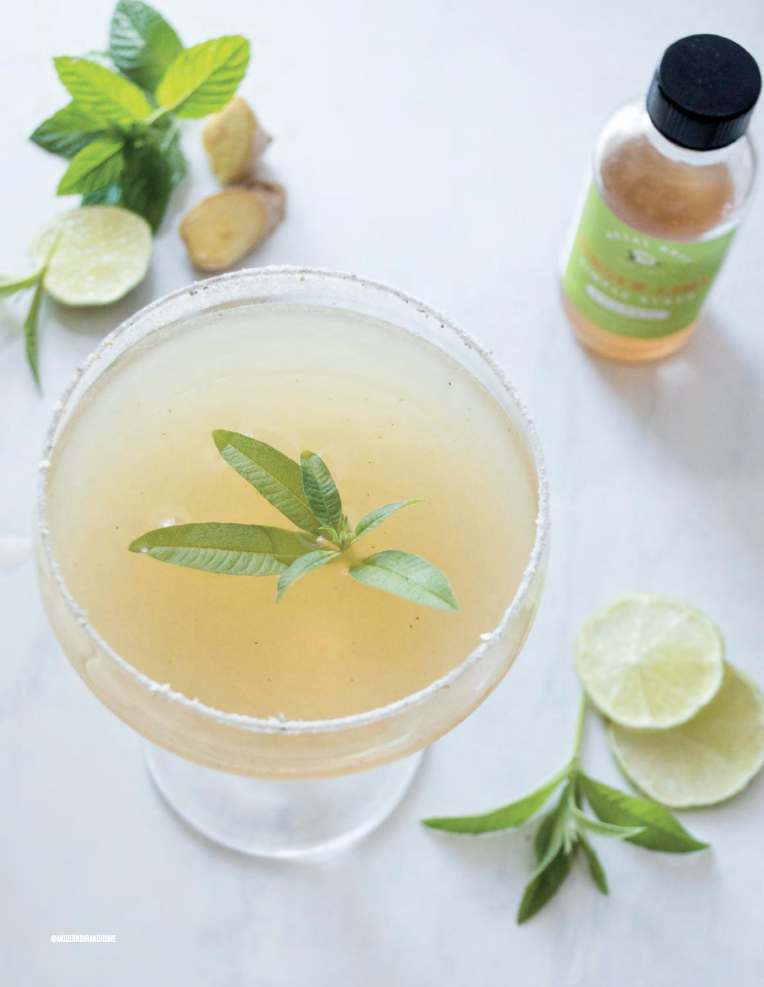Growing A Cocktail Garden
Lemony, herbal, earthy, sweet and savory, elevating your favorite cocktail can be as easy as heading out to your garden.
After winter’s deep hold on our gardens, the fervent signs of spring’s arrival brings a renewed excitement about creating outdoor spaces alive with plants of all colors and scents. Plus, there’s nothing quite as rewarding as growing your own herbs like mint, lemon verbena, rosemary, basil and thyme – the staples of any good cocktail garden. Herbs are generally quick to start and bloom, and they offer a season’s worth of culinary and libational enjoyment without much attention or fuss required. Here in Napa Valley, we are blessed with an abundance of sunshine and long, warm days in which our wineries’ culinary gardens thrive and delight, offering inspiration for all the senses with their color, fragrance, design and harmonious placement within nature. Many of our featured wineries use herbs in their tasting experiences to educate guests on how the flavor profiles in food and spices can either contrast or complement the wines you enjoy. You’re invited to explore just a sampling of the beautiful gardens that await you at the finest wineries in Napa Valley. We’ve also highlighted the top six herbs every home gardener should have for crafting innovative and delicious cocktails all summer long. So, get inspired and get creative. Let the horticulturist in you blossom to expand and excite your mixology repertoire this season.

– Mint –
Mentha, or mint, is a hybrid from the Lamiaceae family, which contains around 15 to 20 plant species, including peppermint and spearmint. This miracle herb has been popular for centuries – both fresh and dried – and used in a myriad of culinary and medicinal concoctions for its warm, aromatic, sweet flavor with cooling aftertaste and wealth of healing properties. A darling of the craft cocktail scene, it’s the backbone of the widely consumed Mint Juleps on Derby Day and the star of various interpretations of “mules” like the classic Moscow, (vodka), Kentucky (bourbon), Mexican (tequila) and London (gin). Fast growing, it’s a perennial so plant it once and watch it spread for a never-ending supply during each summer growing season.

– Basil –
Also a member of the Lamiaceae family, Ocimum basilicum, or basil, is one of the most widely planted herbs across all continents. Sacred in India for its medical healing, the South American ayahuasca ritual calls for it to avoid “bad visions”. And it’s a staple in all South East Asian curries. Sometimes lemony or herbal, but always rooted in notes of anise or licorice, this versatile annual herb works a charm in savory and sweet drinks alike. Riff on a classic and sub-in basil for mint in a Mojito, or how about a Basil Gin Smash. Basil partners well with blackberry, strawberry and raspberry so give it a go in a drink paired to any ripe berries, and pro tip: use a clear spirit like vodka, gin or tequila blanca to keep basil’s fragrant aromas and savory flavors front and center.

– Lemon Verbena –
One of the easiest and most prolific growers in the perennial category, Aloysia citrodora, or lemon verbena is typically only thought of as an ingredient in luxe beauty creams and candles. However, its base essential oils relieve muscle spasms and reduce fevers, and Europeans have used it for centuries as a sedative, to increase appetite in the sick, and to rid indigestion. Its glossy but coarse leaves omit a glorious lemon-herbal scent when touched and it’s a standout in any good artisan tea blend. Craft mixologists often steep the leaves in a clear spirit like vodka or grain alcohol to “lift” the old standard libations, adding a heady aromatics note to the drink. Creating a simple syrup with it (recipe below) is a fantastic way to harness the lemony-goodness of this herb and add a touch of sunshine to any cocktail year-round.

– Rosemary –
One of the most fragrant perennials, rosemary, or Salvia rosmarinus, has an immediately recognizable woodsy-pine scent with herbal notes complementing most any savory dish. Prided by ancient Egyptians, Romans and Greeks, it is still revered today in most cultures as a sacred herb. For cocktail makers, rosemary creates a wonderful earthy depth in drinks and its resin undertones can, if done with a light hand, sit quietly in the background acting similar to bitters by lending a subtle roundness to a cocktail. Rosemary plays well with punchy brown spirits like whiskeys and bourbons, smoky mezcals or barrel-aged tequilas. Try it in a Whiskey Sour or make a simple syrup with the needles and add it to an Old-Fashioned or a Mezcal Margarita for an unexpected balsam note.

– Thyme –
Yet another aromatic perennial evergreen herb in the Lamiaceae family, thyme, or thymus vulgaris, grows year-round in California and blooms prolifically in summer and into early fall. Romans used it to purify their rooms and even added it to cheese and liqueurs for an “aromatic flavor”. In the Middle Ages, Europeans placed thyme beneath their pillows as it was thought to aid in sleeping and ward off nightmares. Today, we use this earthy, slightly minty or lemony herb predominantly as a culinary spice, but it’s fast-growing popularity in mixology makes it a perfect mate with honey or agave. Cocktail “sours” like those based in whiskey or bourbon are a natural pairing, but it’s lovely with citrus too. It shines in lemon, lime and grapefruit juice-based drinks so add it to your next Salty Dog cocktail for a twist!

– Lavender –
To most people’s surprise, Lavandula, commonly known as lavender, is a member of mint family (Lamiaceae). Native in all geographic areas with a temperate climate, lavender is typically found as an ornamental or landscape plant and used most frequently commercially for the extraction of its essential oils for its calming and soothing effect on the body. Its sweet, floral fragrance is unmistakable, and, depending on the species, the buds can have a taste of lemon or mild citrusy notes. The stalks are similar to rosemary with a woodsy taste and fragrance. For cocktail lovers, lavender is fun to explore as a simple syrup when added to lighter style drinks, and it’s simply heavenly in a tall glass of icy cold lemonade on a blistering hot day. Its best spirit-partner is Gin, so try it in a version of a Bee’s Knees or a Lavender-Sage Sling as an aperitif. Or, pop a sprig of lavender in a flute of Champagne or sparkling wine for a heady note and citrus-herbal flavor. Honey, agave and vanilla are great playmates with lavender and help bring out the sweetness of this beautiful purply-blue herb. A Lavender Martini made with a vanilla vodka, lavender simple syrup as well as dried lavender petals for garnish make for a stunning sipper, but also flood the senses with thoughts of pastoral fields in Provence on a summer’s day. What could be better!
• • • • • • • • • • • • •
– Tips –
Fools’ Spring: Although there can be lots of sunshine here in California and mild to warm daytime temps in February and March, don’t let the blue skies trick you into planting too early. Northern California can see overnight temperatures dip down to the low 30s through late Spring, with frost advisories typically not lifted until mid-May. So keep a watchful eye on the weather and rule of thumb: Plant all seasonal herbs AFTER Memorial Day to ensure hardy and healthy plants.
Buy Organic: Unlike most shrubs or outdoor plants you may buy at a garden center or nursery, herbs are primarily used for culinary purposes so you will be eating them. Like most fruits and vegetables, buying organic or those grown without synthetics, chemicals and harmful sprays is much better for your health. The same ideology applies to your herb garden. Buy organic or pesticide-free starters if possible and look for organically grown seed packets if you’re planning to raise seedlings from scratch.
• • • • • • • • • • • • •
Lemon Verbena-Ginger-Mint Gimlet
Recipe courtesy The MODern Bar and Home | @modernbarandhome
2 sprigs of fresh mint
1 oz Lemon Verbena Sugar (for Syrup and rimming)
1 oz Royal Roseme Ginger-Lime Syrup
1 oz Lemon Verbena Syrup
1 thumb-size piece of fresh ginger
1 lime
2 oz gin
Muddle mint and fresh ginger in a shaker. Add ice, gin, Ginger-Lime Syrup, Lemon Verbena Syrup, juice from the lime. Shake well and strain with a fine strainer into a reserved glass. Garnish with a sprig of lemon verbena.
Lemon Verbena Sugar
4 fresh lemon verbena leaves
3 Tbl sugar
Zest half side of a lemon
Grind sugar, lemon verbena and lemon zest in a spice grinder until very fine. Reserve 3 tablespoons in a microwave safe bowl to use for Lemon Verbena Syrup. Put remaining lemon verbena sugar on a small plate. Take a slice from the lime and run it around the rim of a coupe or martini glass then dip rim in Lemon Verbena Sugar.
Lemon Verbena Syrup
Put 3 tablespoons of reserved Lemon Verbena Sugar in a microwave dish with 3 tablespoons of water. Microwave on high at 20 second intervals until sugar has completely dissolved. Strain liquid through a coffee filter to achieve a clear, viscous liquid.
